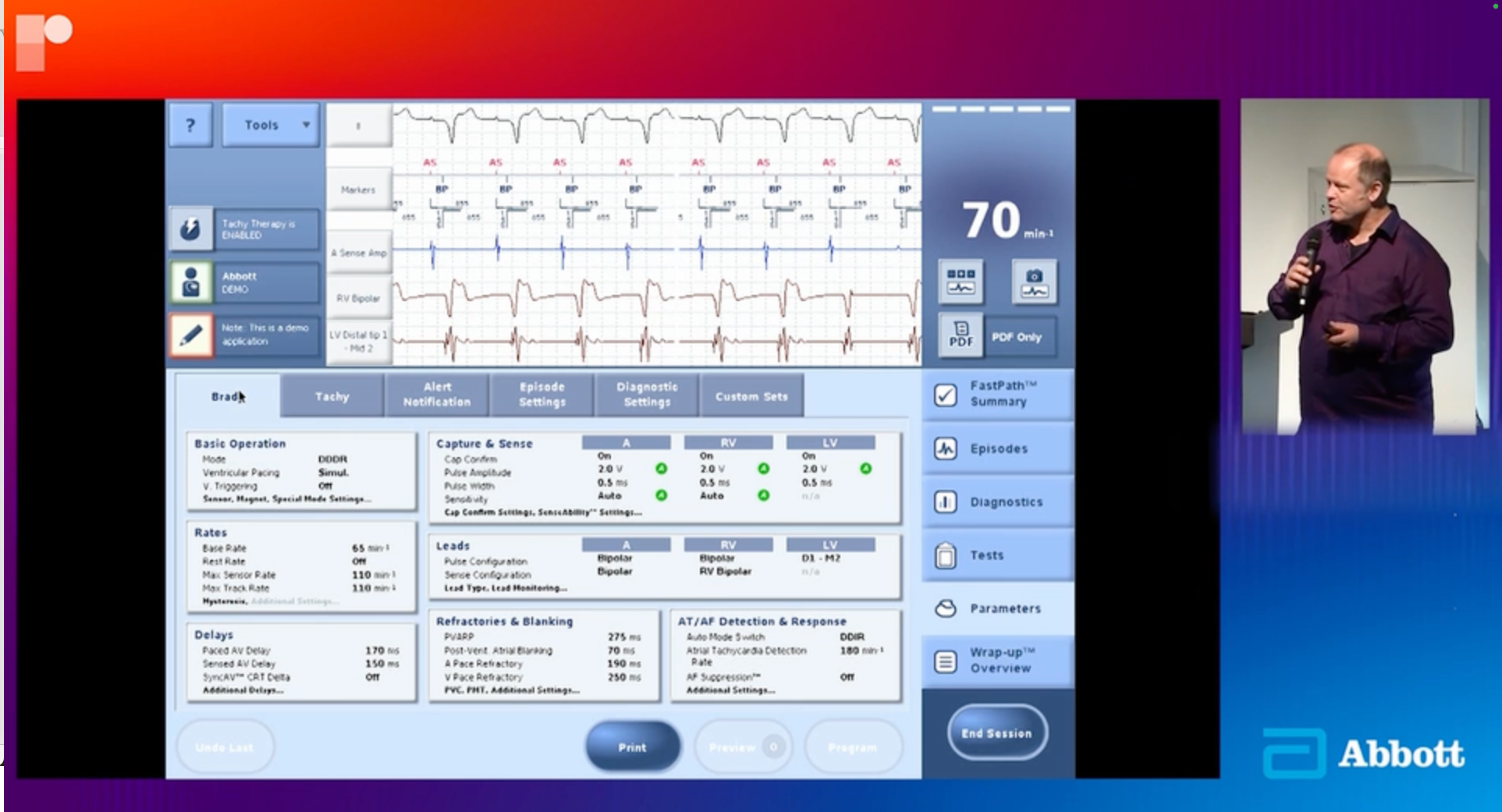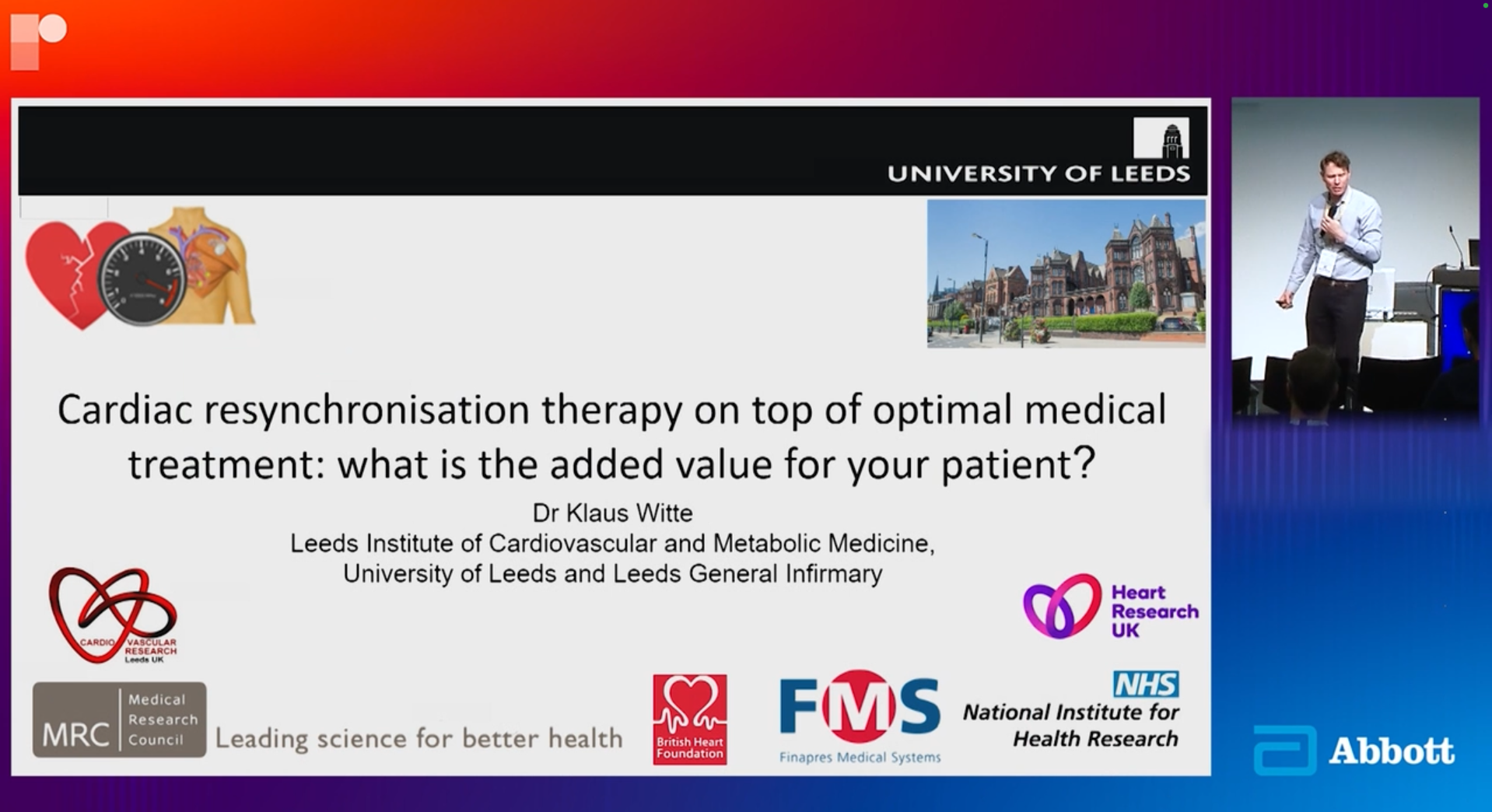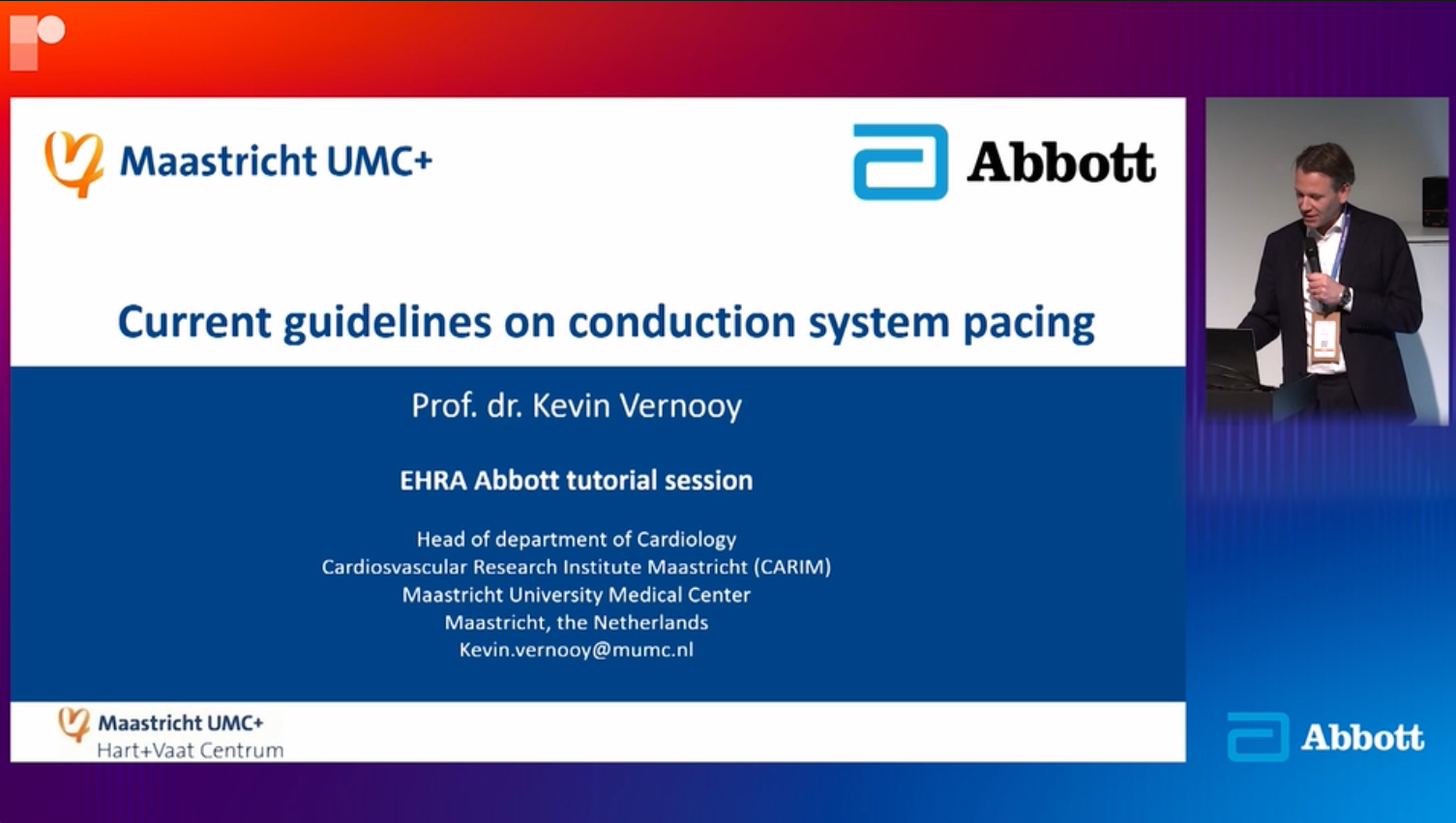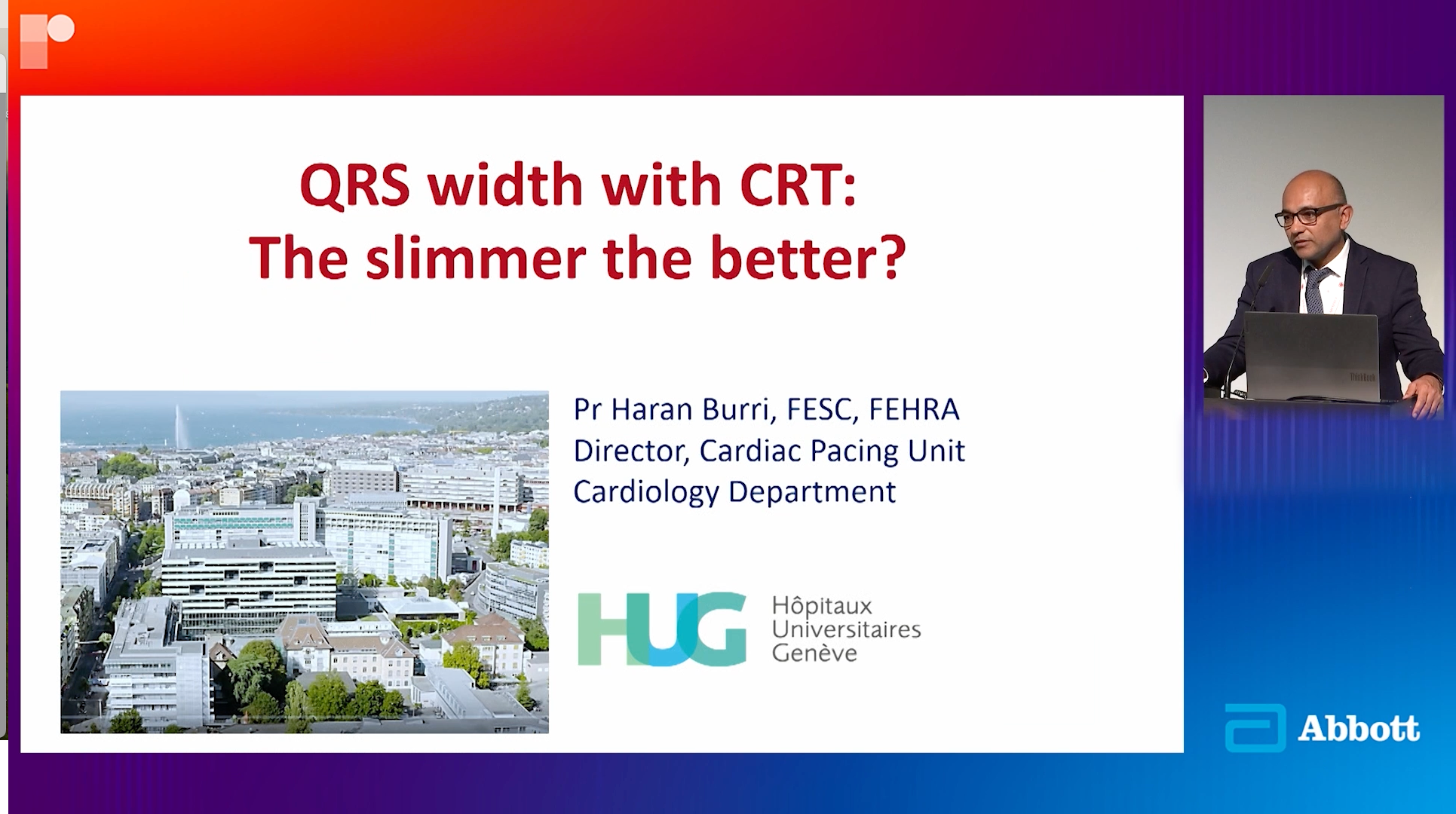Cardiac Rhythm Management – Tutorial Sessions
Published: 18 October 2024
-
Views:
 299
299
-
Likes:
 7
7
-
Views:
 299
299
-
Likes:
 7
7
-
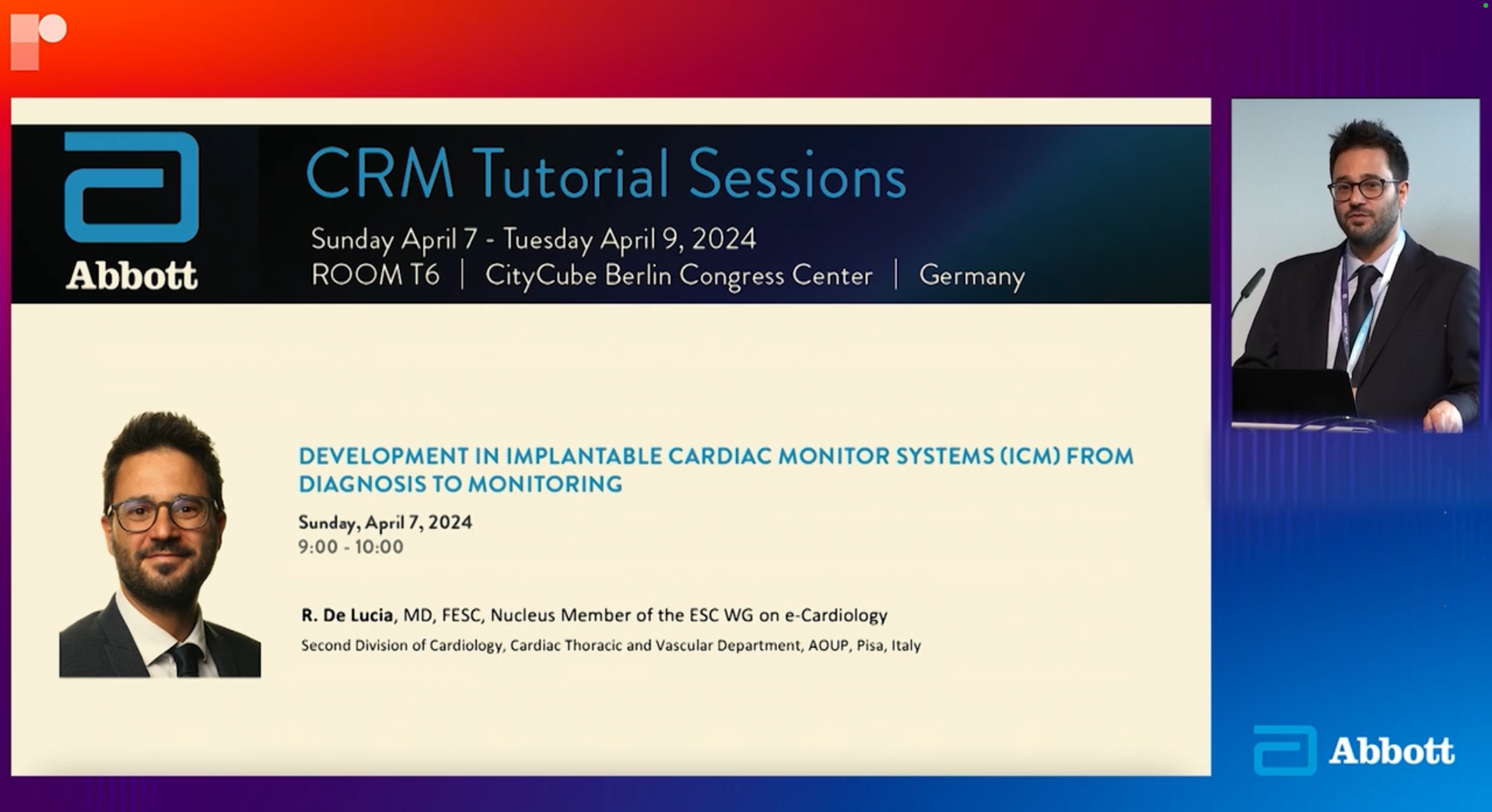 43m 3sPart 1 Developments in Implantable Cardiac Monitor Systems (ICM) – From Diagnosis to Monitoring Raffaele De Lucia
43m 3sPart 1 Developments in Implantable Cardiac Monitor Systems (ICM) – From Diagnosis to Monitoring Raffaele De Lucia
-
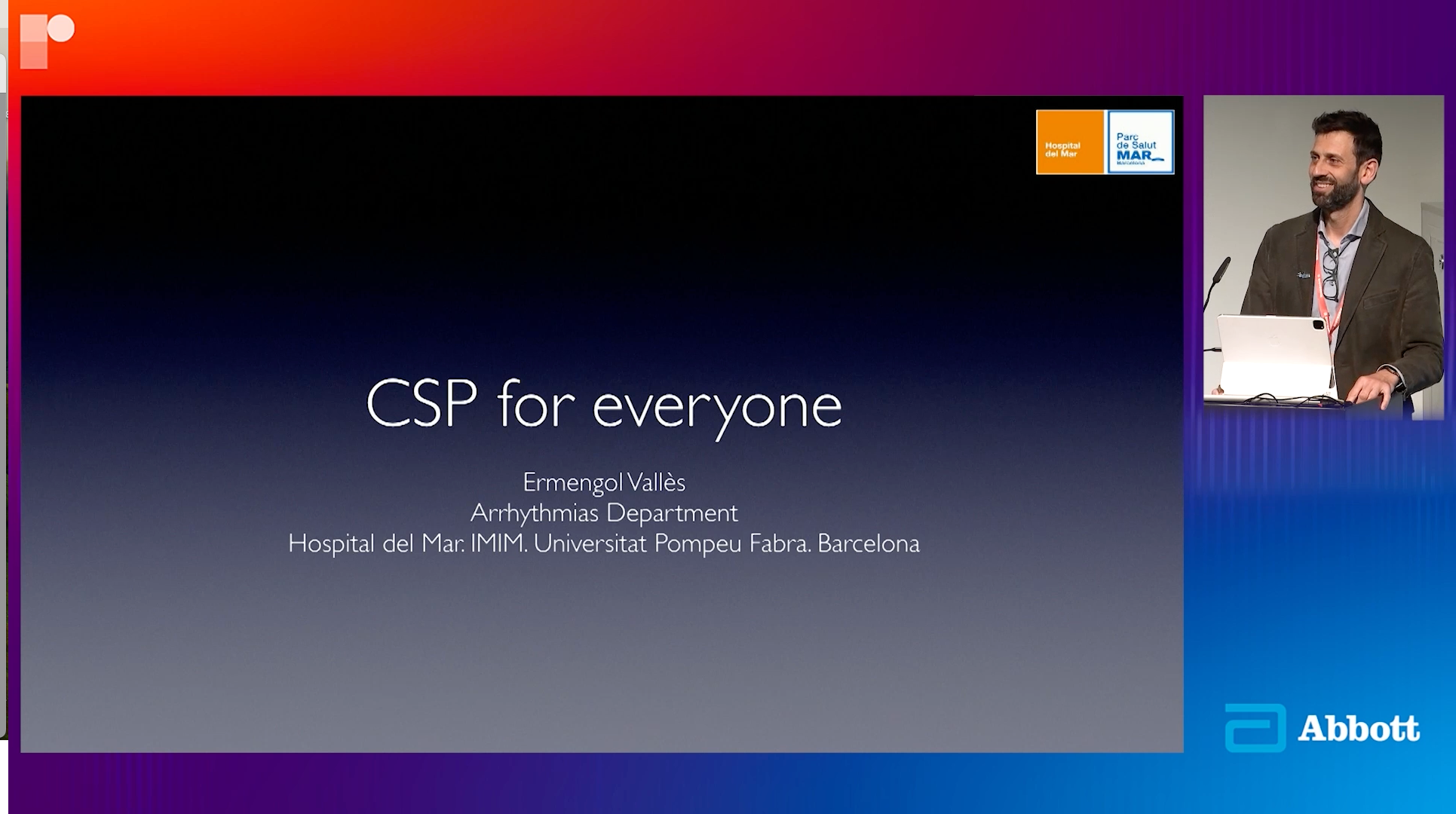 19m 19sPart 4 LBB Implant in Daily Use. Using Merlin Programmer (No 12 Lead ECG) Ermengol Valles
19m 19sPart 4 LBB Implant in Daily Use. Using Merlin Programmer (No 12 Lead ECG) Ermengol Valles
-
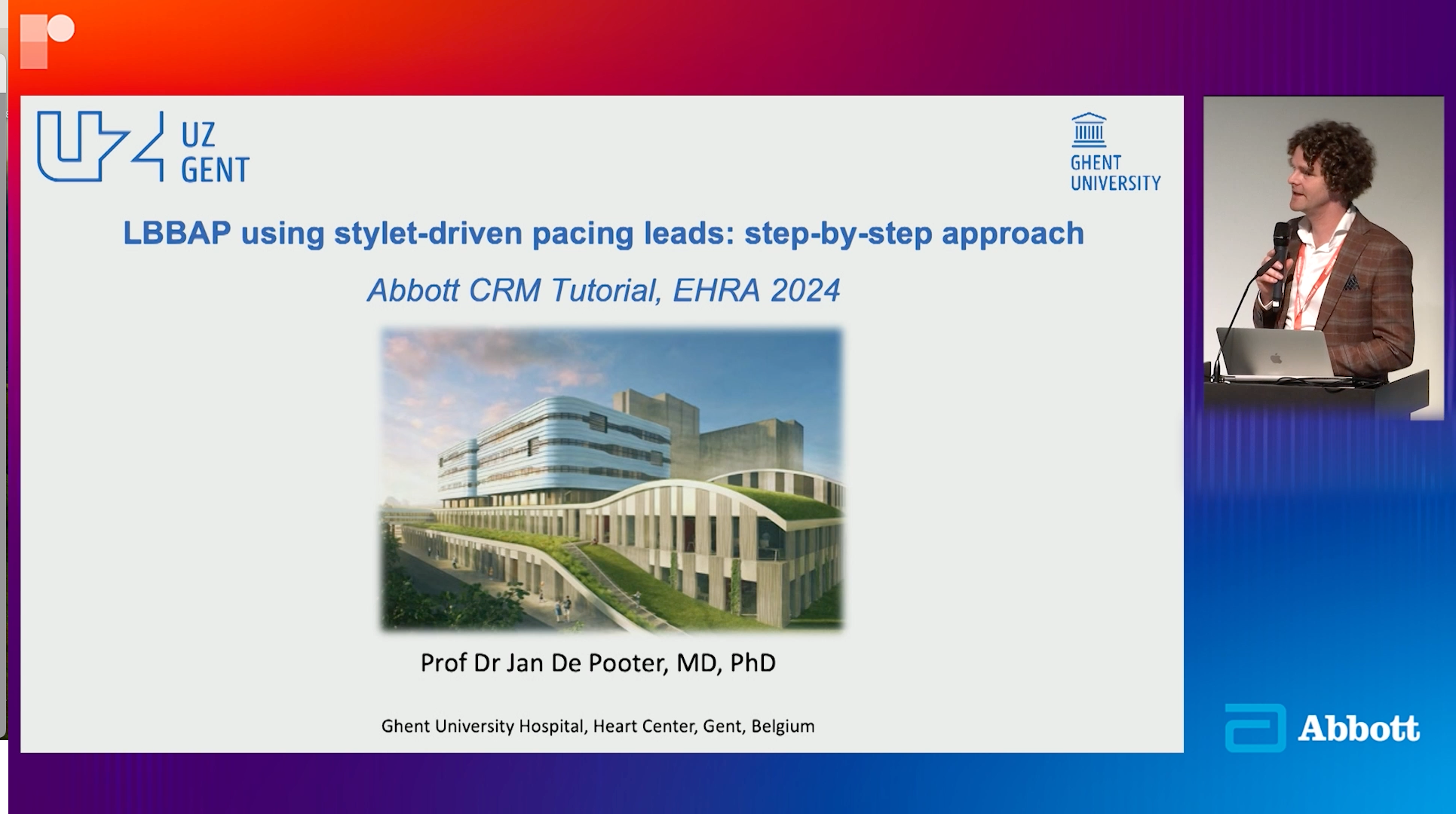 41m 33sPart 5 Stylet Driven LBB Implant: Step-by-step Approach Jan De Pooter
41m 33sPart 5 Stylet Driven LBB Implant: Step-by-step Approach Jan De Pooter
-
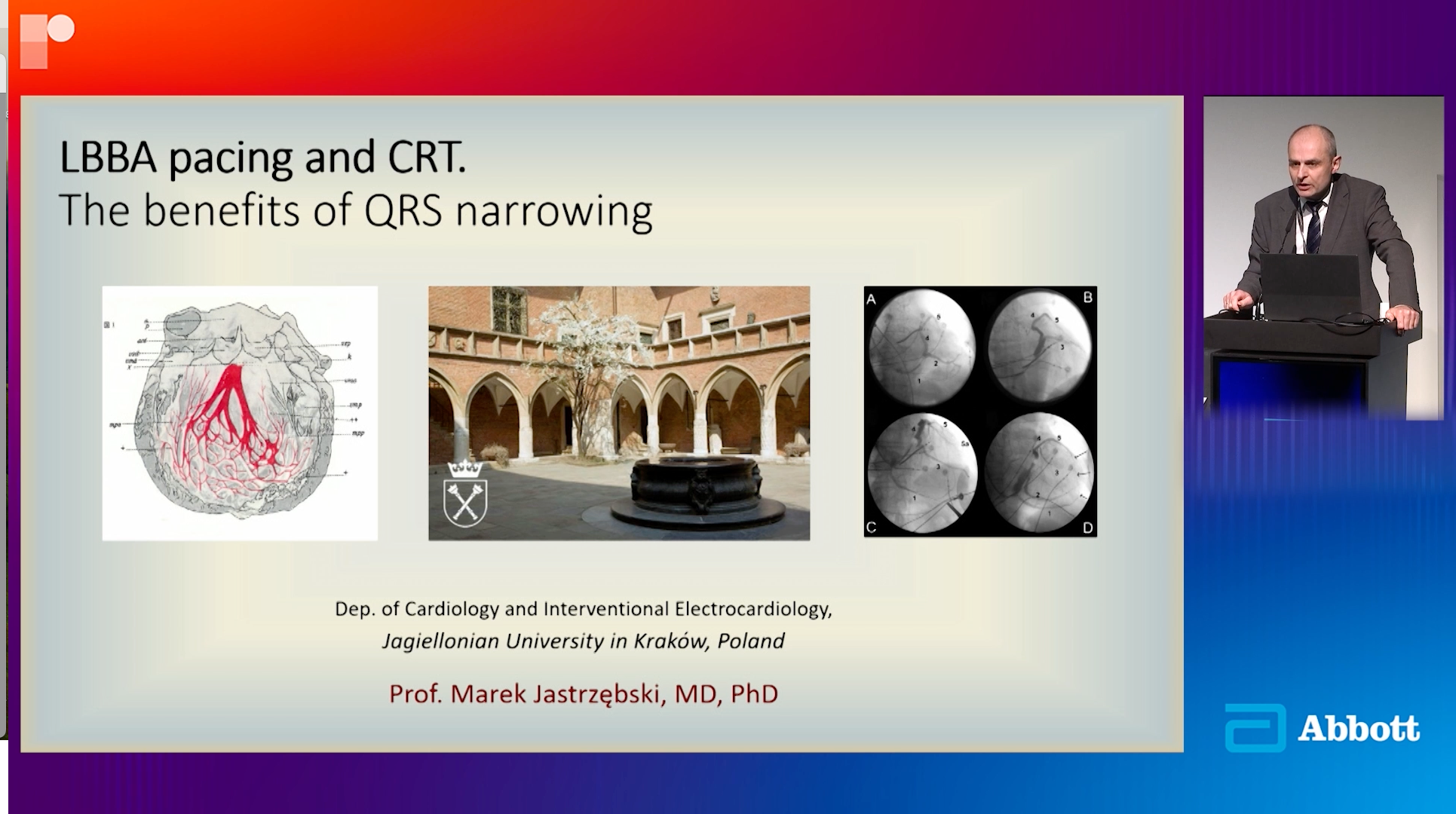 48m 32sPart 6 Main Benefits of QRS Narrowing in Scope of Cardiac Resynchronisation Therapy and LBBAP Marek Jastrzębski
48m 32sPart 6 Main Benefits of QRS Narrowing in Scope of Cardiac Resynchronisation Therapy and LBBAP Marek Jastrzębski
-
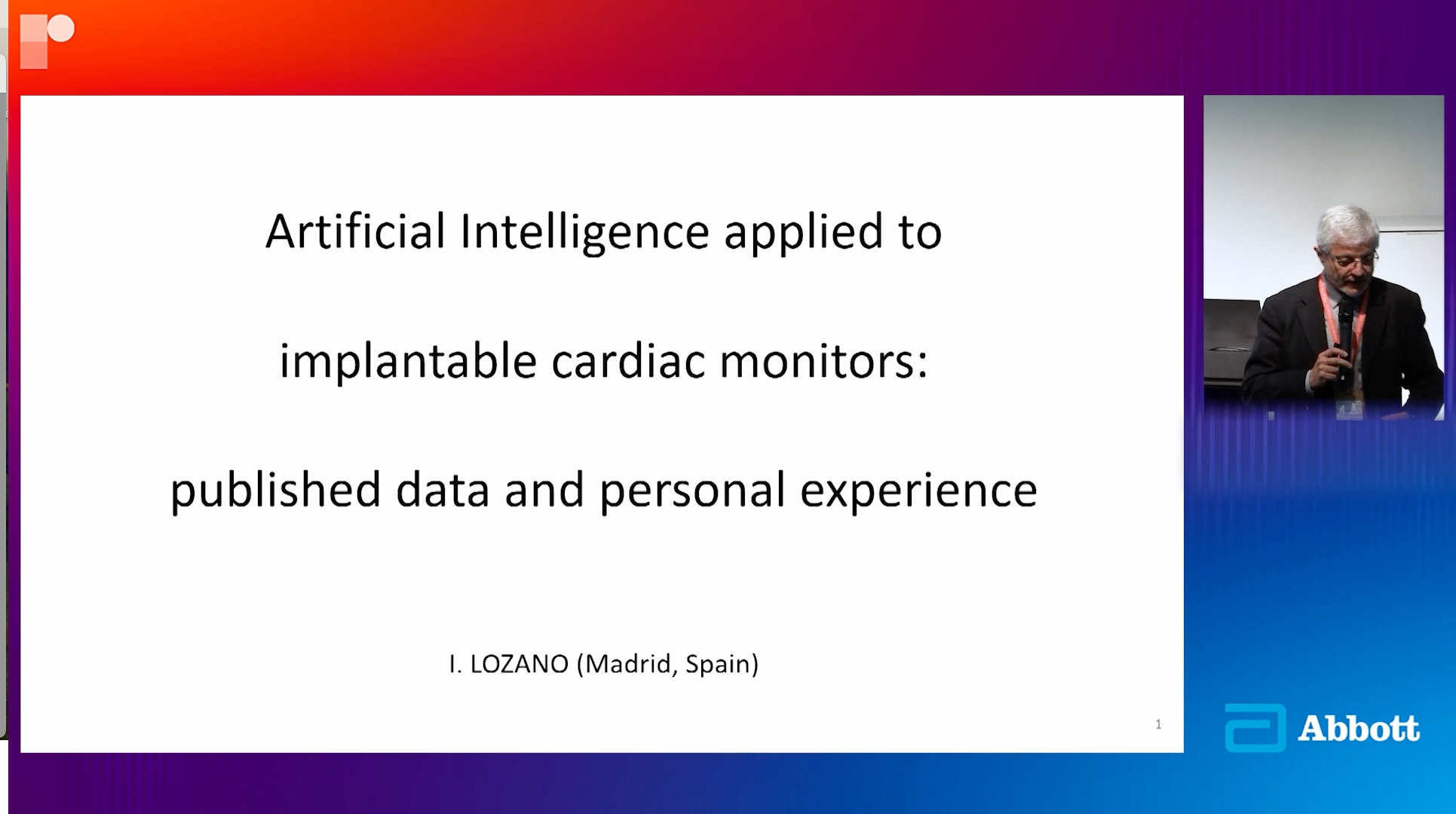 28m 53sPart 9 ICM Data Management With AI Ignacio Lozano
28m 53sPart 9 ICM Data Management With AI Ignacio Lozano
Overview
Recorded at EHRA 2024, this comprehensive series of tutorials is curated to support the advancement of knowledge on the practical use of cardiac rhythm management. Bringing together internationally-recognised opinion leaders, the sessions examine both clinical evidence and real-world application in support of better patient outcomes.

More from this programme
Part 1
Developments in Implantable Cardiac Monitor Systems (ICM) – From Diagnosis to Monitoring
In this tutorial, Dr Raffaele De Lucia reviews the most common indications for implanting an ICM, and considers for which patients ICM may prove most useful following AF ablation.
Part 2
Current Guidelines (ESC/HRS) on Conduction System Pacing and the Relevance of Fusion-Pacing
Prof Kevin Vernooy reviews the ESC / HRS guidelines, and considers their application with case-based examples.
Part 3
Optimization and the Impact of SyncAV: How to Optimize CRT Response for Improved Outcomes
Dr Matteo Ziacchi provides a detailed overview of SyncAV. He notes that personalised CRT is fundamental for outcome improvements and that individualisation with relatively few adjustments to the SyncAV in BIV pacing modes and LV-only fusion modes has shown a positive effect on QRS narrowing.
Part 4
LBB Implant in Daily Use. Using Merlin Programmer (No 12 Lead ECG)
Dr Ermengol Valles concludes that CSP has demonstrated to be similar to CRT in reduced LVEF patients, whilst there is evidence to suggest that CSP is better than RVAP in normal LVEF patients. He notes that LBBAP could become the gold standard technique and should not be restricted to hospitals with an EP unit.
Part 5
Stylet Driven LBB Implant: Step-by-step Approach
Dr Jan De Pooter provides a comprehensive overview of Stylet-driven LBB implants, including a detailed review of the key criteria for LBBP success.
Part 6
Main Benefits of QRS Narrowing in Scope of Cardiac Resynchronisation Therapy and LBBAP
Dr Marek Jastrzębski provides a detailed examination of the LBBA pacing and CRT, with focus on the benefits of QRS narrowing.
Part 7
Optimization of CRT as a Gold Standard to Improve Patient Outcomes. How Can We Aim for More Benefits From QRS Narrowing?
Dr Haran Burri considered QRS with CRT. He asks, is it a case of the slimmer the better?
Part 8
The Role of ICD Therapy in Heart Failure in 2024 – What Is the Holistic Approach to Treat Heart Failure?
Dr Carsten W Israel concludes that ICD therapy in HF is particularly effective together with OMT, that HF death and SCD are in a competitive run (if you slow one, the other wins), and that OMT and ICD in HF are complementary, not competitive.
Part 9
ICM Data Management With AI
Dr Ignacio Lozano presents both published data and personal experience relating to artificial intelligence applied to implantable cardiac monitors.
| 1 session | |
| ICM Data Management With AI | Watch now |
Part 10
Optimal Programming – How to Get the Best Out of the Cardiac Resynchronisation Therapy for Your Patients?
Dr Carsten W Israel provides a practical tutorial, sharing insights from personal experience, and well as discussing tips, tricks and good practice.
Part 11
Cardiac Resynchronisation Therapy on Top of Optimal Medical Treatment: What is the Added Value For Your Patient?
Dr Klaus Witte concludes that CRT offers added value, but only if practitioners lose the myths, follow the evidence and coordinate their follow-ups.
Faculty Biographies
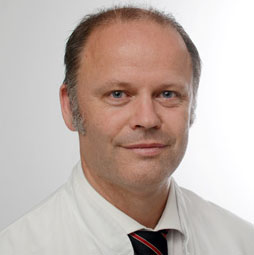
Carsten W Israel
Associate Professor
Dr Carsten W Israel is Chief of Cardiology at Bethel-Clinic, Bielefeld, an Academic Hospital of Munster University, Germany.
Dr Israel participated in numerous landmark trials in the field of arrhythmias.
Scientific appointments include a number of guidelines and position statements, speaker of the Working Group of Arrhythmias of the German Cardiac Society.
Dr Israel is a member of the Arrhythmia & Electrophysiology Review editorial board, co-editor of EUROPACE and member of the World Society of Arrhythmias board. He is often published in scientific journals and frequently invited to congresses and numerous educational activities.






